

James Wong
2026 Audi Q5 review: Quick drive
5 Days Ago
Lamborghini may have ditched its V10, but it says the new Temerario's V8 can rev up to 10,000rpm and sound good doing it.

News Editor
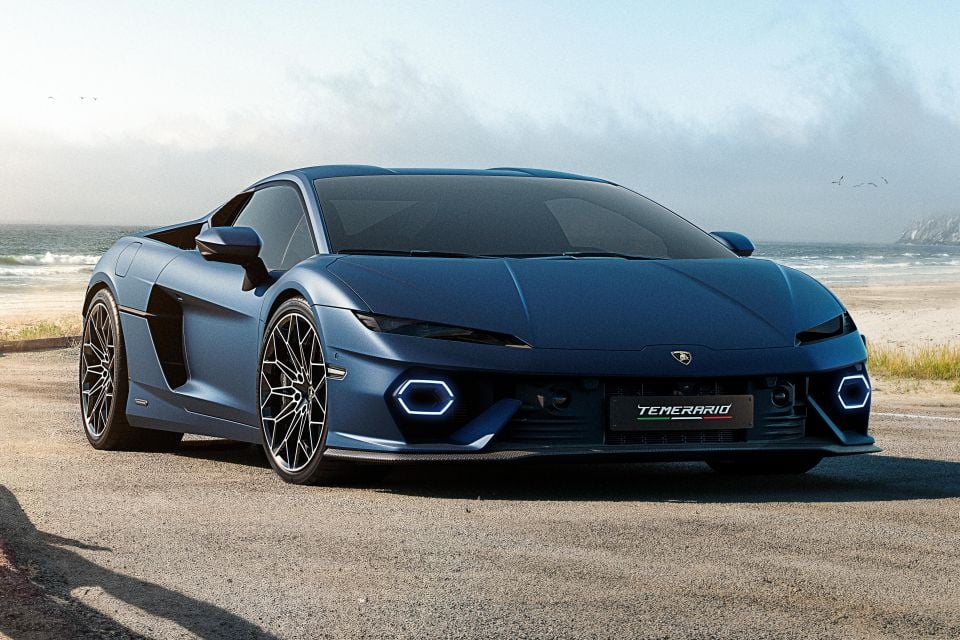

News Editor
Lamborghini has revealed its replacement for the naturally aspirated V10-powered Huracan, with the new Temerario supercar packing a bi-turbo plug-in hybrid V8.
It follows Lamborghini’s replacement of the V12-powered Aventador with the plug-in hybrid (PHEV) V12-powered Revuelto.
Lamborghini claims the new twin-turbo V8 engine is the first and only production super sports car engine able to reach 10,000rpm.
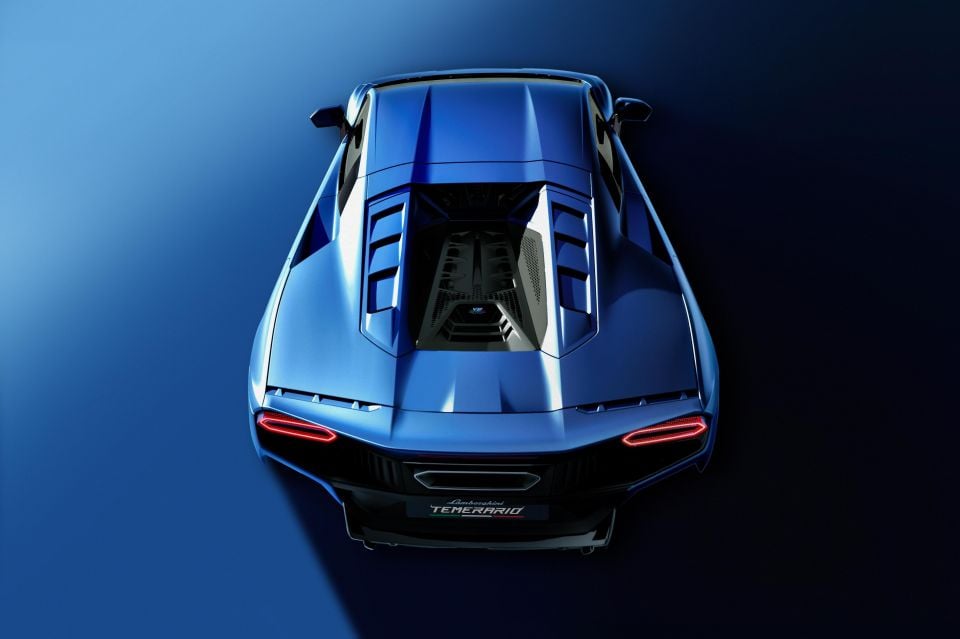
It’s mated with three oil-cooled axial flux electric motors – one integrated in the V8 housing, and another two on the front axle.
The electric motors produce 110kW each and weigh 15.5kg, and combined with a 3.8kWh lithium-ion battery allow the vehicle to be driven purely on electric power. Lamborghini claims a 50 per cent reduction in CO2 emissions compared to the Huracan.
Total system output is 677kW, with a 0-100km/h time of 2.7 seconds.
Here are the key specifications of the new supercar’s powertrain:
| Lamborghini Temerario | |
|---|---|
| Engine | Bi-turbo 4.0L V8 with flat-plane crank |
| Engine power | 588kW @ 9000-9750rpm |
| Engine torque | 730Nm @ 4000-7000rpm |
| Electric motor power | 220kW @ 3500rpm |
| Total system power | 677kW |
| Transmission | 8-speed dual-clutch auto |
| Drive type | All-wheel drive |
| 0-100km/h time | 2.7 seconds |
| Top speed | 343km/h |
| Battery | 3.8kWh lithium-ion |
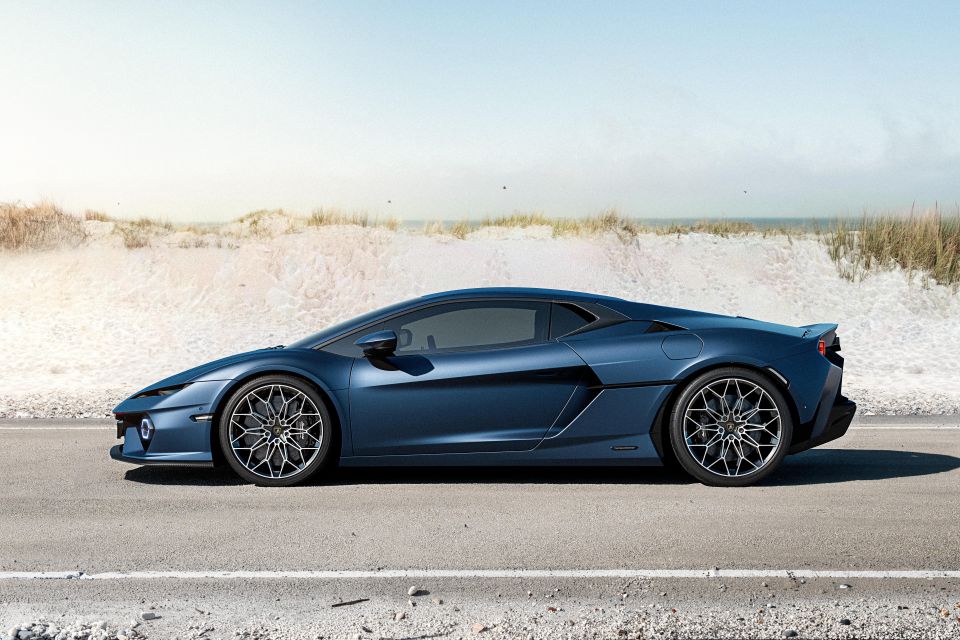
Lamborghini says the electric motors fill in torque gaps and the turbochargers allow high torque at high engine speeds, and claims the powertrain has a linear feel with high-revving characteristics like a naturally aspirated engine.
The turbochargers sit within the V of the engine and have a maximum boost pressure of 2.5 bar.
It’s not just about stats on paper, though, with Lamborghini investing “significant technical effort” to ensure the Temerario’s powertrain has an “unmistakable audio experience”.
“With the V8 biturbo, the amplitude and frequency of the sound increase as the engine speed rises, and thanks to the flat-plane crankshaft, subtle vibrations underline the power of the drive depending on the engine speed,” said chief technical officer Rouven Mohr.

Lamborghini cites a “special connection” between the engine banks to enhance the sound effect subject to the engine speed, while the exhaust system’s routing from the manifold to the tailpipes affords a “clear and clean sound”.
Engineers also designed the engine mounts and body to ensure a flat crankshaft character that can be felt at high speeds or under full load.
A sound symposer emits acoustic waves into the interior and the electric drive unit has its own sound.
The Temerario sounds different between drive modes, ranging from quiet (Città mode) to “comfortable and homogenous” (Strada) to “amplified and exhilarating” (Sport and Corsa).
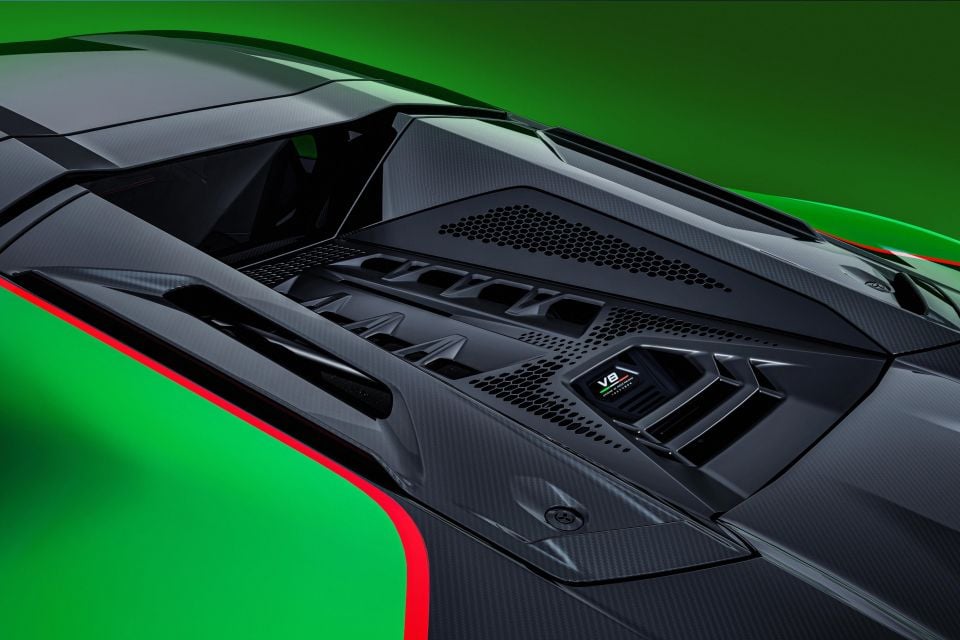
There are also new Recharge, Hybrid, Performance and Drift modes – the latter with three different levels of its own – with Lamborghini claiming 13 unique driving experiences in total.
A new eight-speed dual-clutch automatic transmission (DCT) weighs less than the Huracan’s seven-speed DCT and has faster shift times. It’s mounted transversely behind the V8.
Lamborghini has also given the supercar an electric torque vectoring system to improve cornering agility and high-speed stability, and it intervenes on the brakes only when strictly necessary.
The Temerario has a fully aluminium body and sits on a new, more rigid aluminium chassis, with torsional stiffness up by 20 per cent.

It has a dry weight of 1630kg, whereas the Huracan weighed 1422kg. The 3.8kWh lithium-ion battery is located within the central tunnel to keep the car’s centre of gravity low.
It can be charged at up to 7kW using AC power, and is also charged under regenerative braking.
The Temerario rides on Bridgestone Potenza Sport tyres – 255/35 ZR20 up front, 325/30 ZR21 at the rear.
Stopping is provided by carbon-ceramic brakes with fixed aluminium monoblock calipers, with 10 pistons up front and four at the rear.
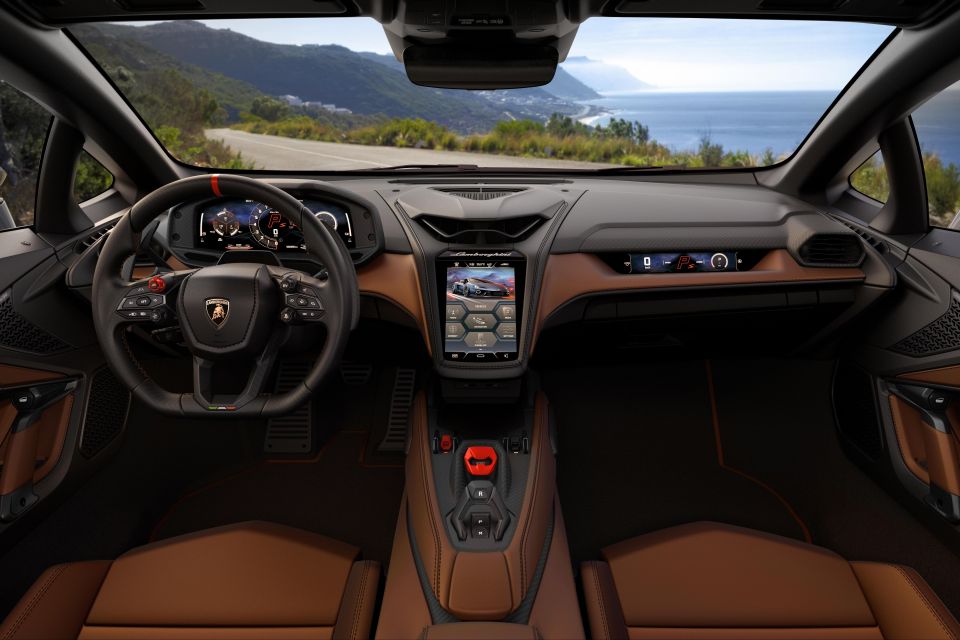
The discs measure 410mm by 38mm up front and 390mm by 32mm at the rear.
Lamborghini says the new spaceframe chassis isn’t just more rigid, it has also allowed it to increase interior space – so much so that the company claims it has more passenger and luggage space than any other vehicle in its segment.
Headroom is up by 34mm and legroom by 46mm, and passengers up to 200cm tall can fit even when wearing a helmet.
Lamborghini claims the centre console has space for a smartphone and a wallet, and under the bonnet there’s 112L of storage space.
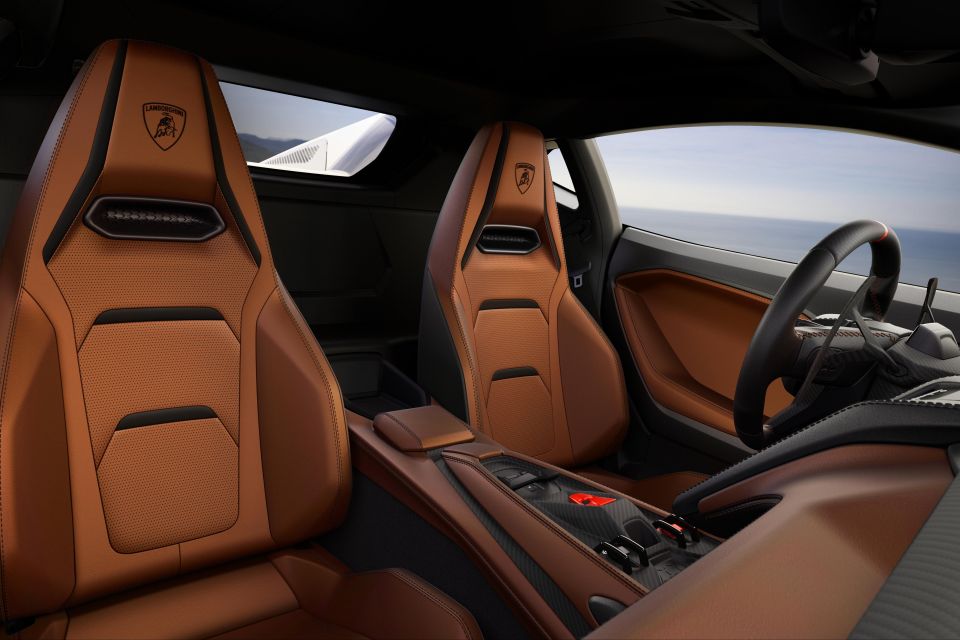
Electrically adjustable sports seats are standard, though you can opt for carbon-fibre double-shell seats. 18-way comfort seats offer heating and ventilation.
The interior has been designed to make the driver feel like a pilot, with easily accessible controls and an aviation-inspired start/stop button.
There’s a new, racing-inspired steering wheel. On the left-hand side is the red-crowned rotor used for drive mode selection, as well as a button to raise the vehicle and a race start button. There are also switches for the indicators.
Launch control is engaged with the press of a button.
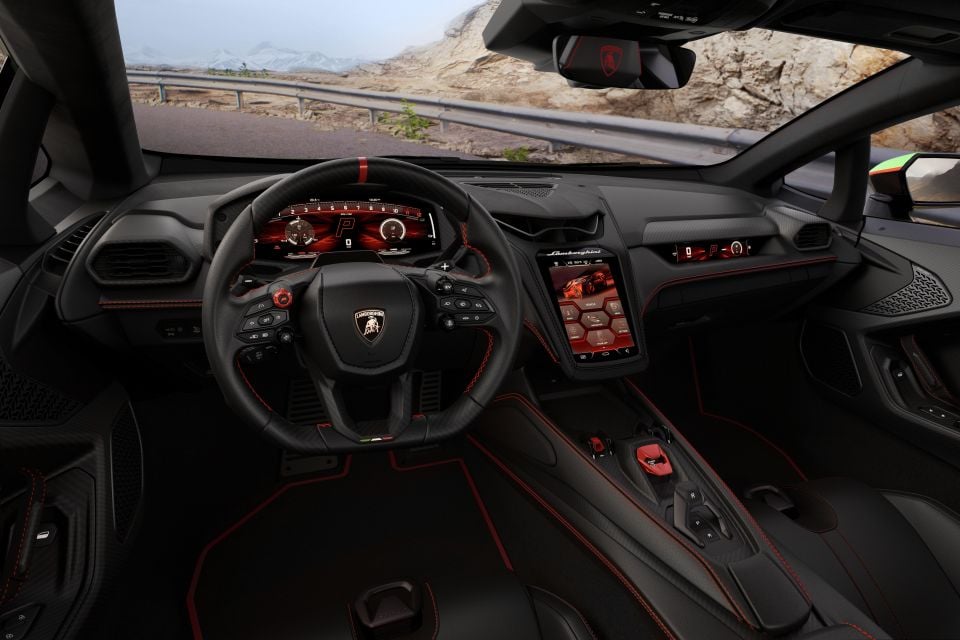
There’s a 12.3-inch digital instrument cluster, a 8.4-inch central infotainment touchscreen, and a slim 9.1-inch display for the passenger.
The infotainment system features wireless Android Auto and Apple CarPlay.
There’s a Lamborghini Vision Unit (LAVU) option which uses three cameras – inside and out of the car – and a dedicated control unit so you can record your driving.
You can also use the Lamborghini Unica app to monitor the car remotely, as well as view information like its fuel and charge level.
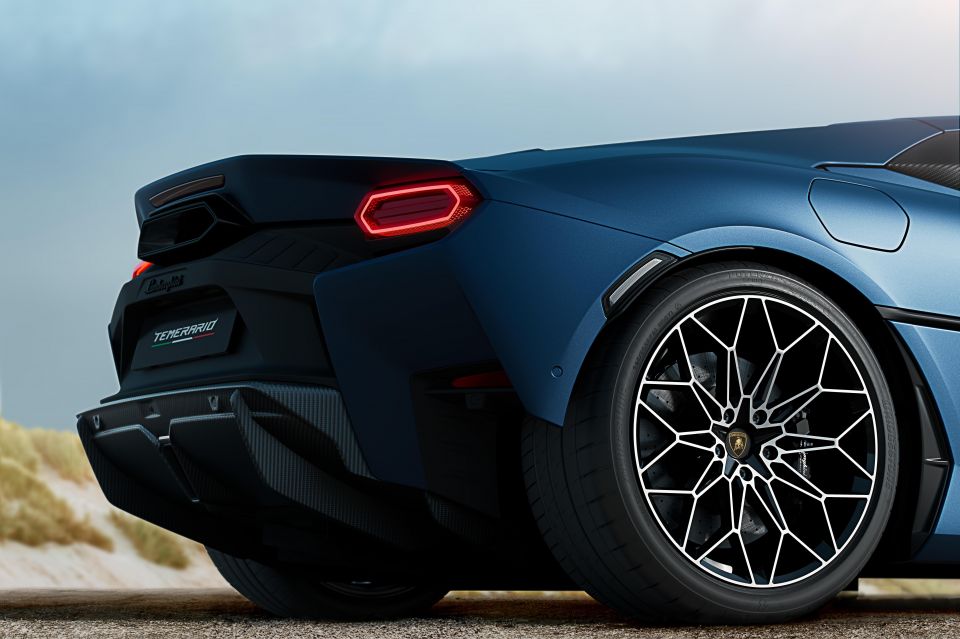
An onboard telemetry app allows for course and lap time information to be viewed on the infotainment screen, and includes over 150 circuits.
As expected of a Lamborghini, there’s extensive customisation. Myriad interior and exterior parts can be specified in carbon fibre, while over 400 exterior colours and liveries will be available through Lamborghini’s Ad Personam program.
The wheels can be had in cast, forged and carbon guise, and in various colours.
An optional Alleggerita (lightweight) package reduces the car’s weight by 12.65kg through body components alone and strips 25kg from interior weight.
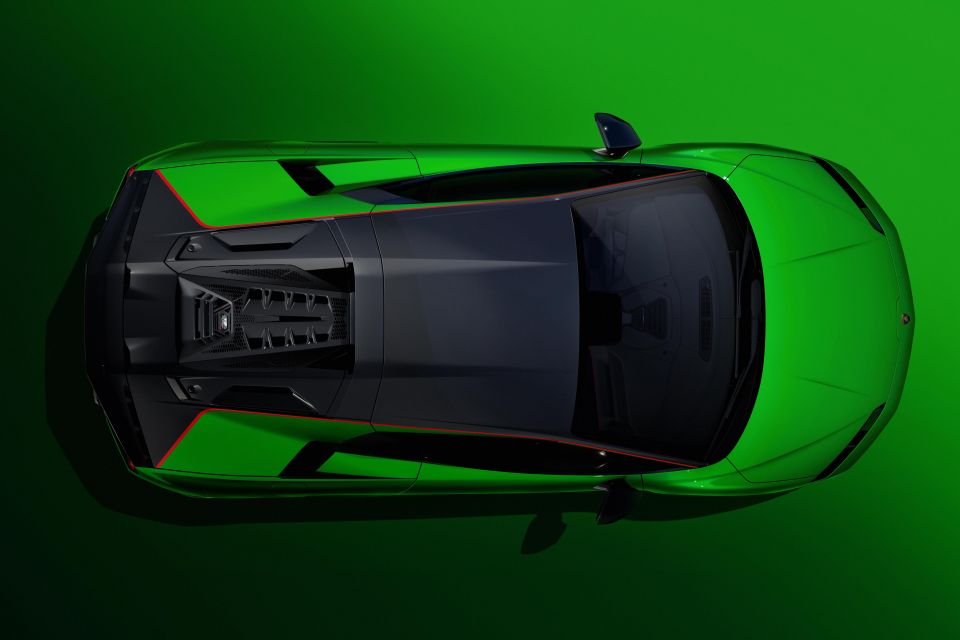
This pack includes carbon fibre-reinforced polymer (CFRP) splitter and skirts and recycled carbon-fibre underbody panels, and features various carbon-fibre interior elements as well as lightweight rear window glass and fixed polycarbonate side windows.
The Temerario is unmistakably Lamborghini in its exterior styling, but there’s an evolved look with a hexagonal theme used for the daytime running light signature, side air intakes, tail lights and exhaust outlets.
The engine is clearly visible, with Lamborghini designers evoking the way a motorcycle’s engine can be seen under a transparent hood.
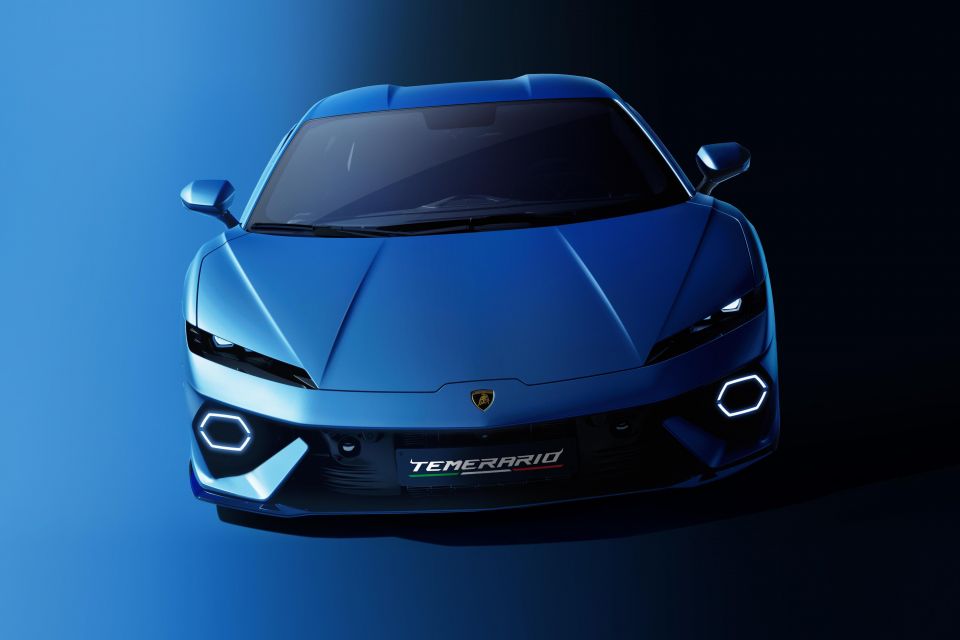
Rear downforce is up by 103 per cent compared to the Huracan Evo, increasing to 158 per cent with the Alleggerita Pack optioned.
With the Temerario, Lamborghini now offers an electrified powertrain in all three of its vehicle lines. A fully electric model from the brand isn’t due until 2028.
Click an image to view the full gallery.
Where expert car reviews meet expert car buying – CarExpert gives you trusted advice, personalised service and real savings on your next new car.
William Stopford is an automotive journalist based in Brisbane, Australia. William is a Business/Journalism graduate from the Queensland University of Technology who loves to travel, briefly lived in the US, and has a particular interest in the American car industry.


James Wong
5 Days Ago


James Wong
5 Days Ago


Max Davies
4 Days Ago


Josh Nevett
2 Days Ago


Max Davies
2 Days Ago
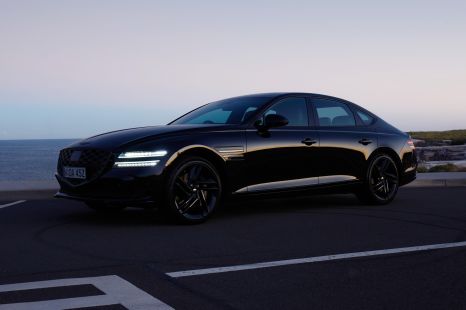

William Stopford
1 Day Ago